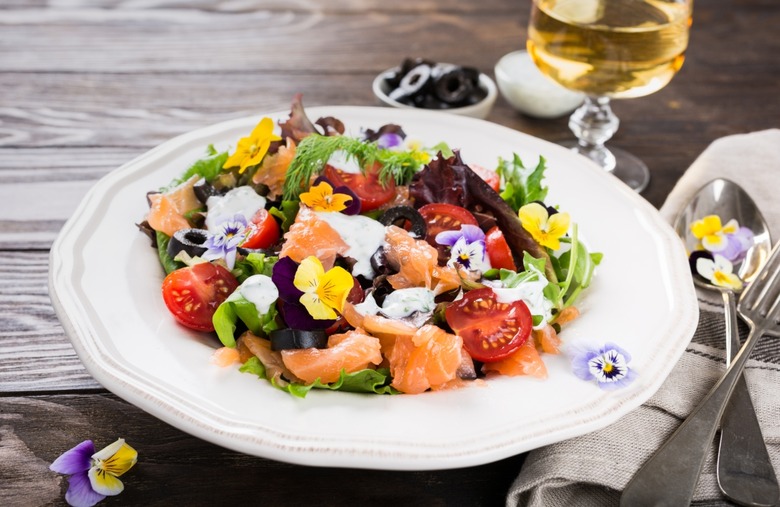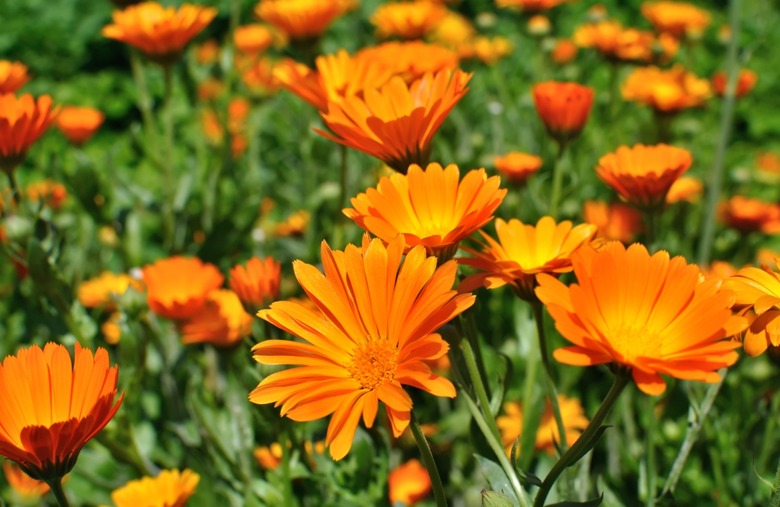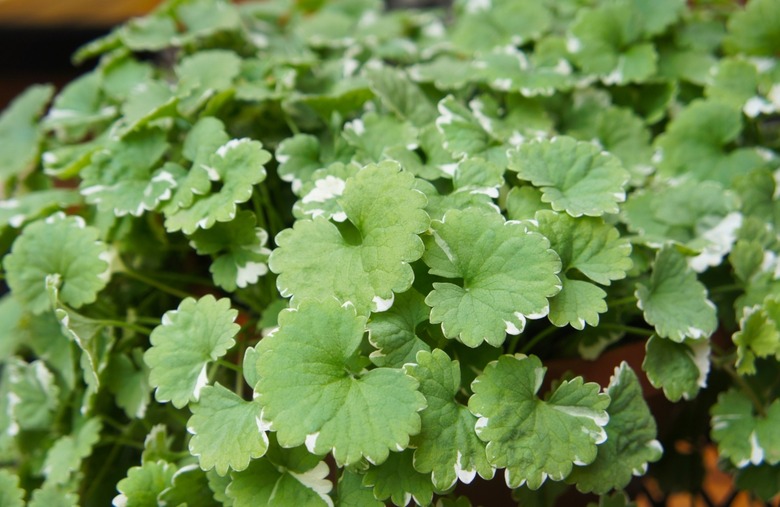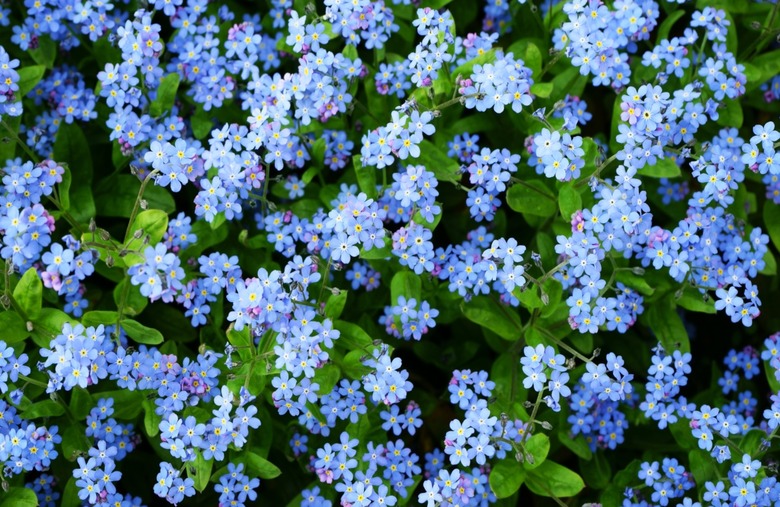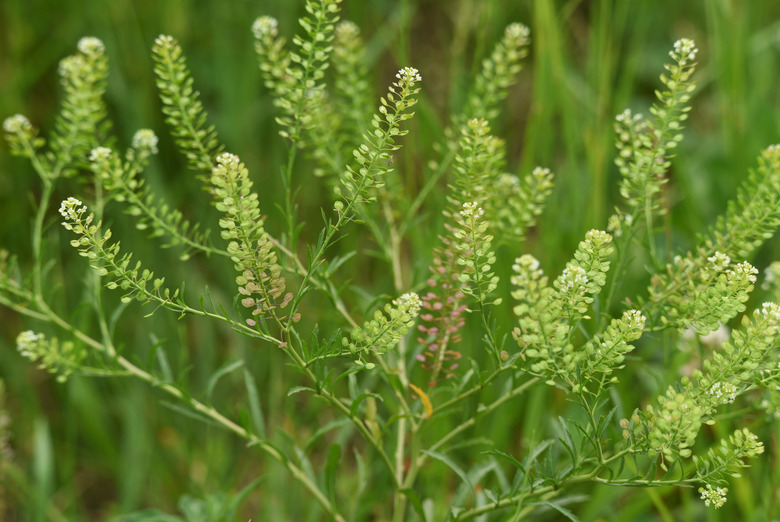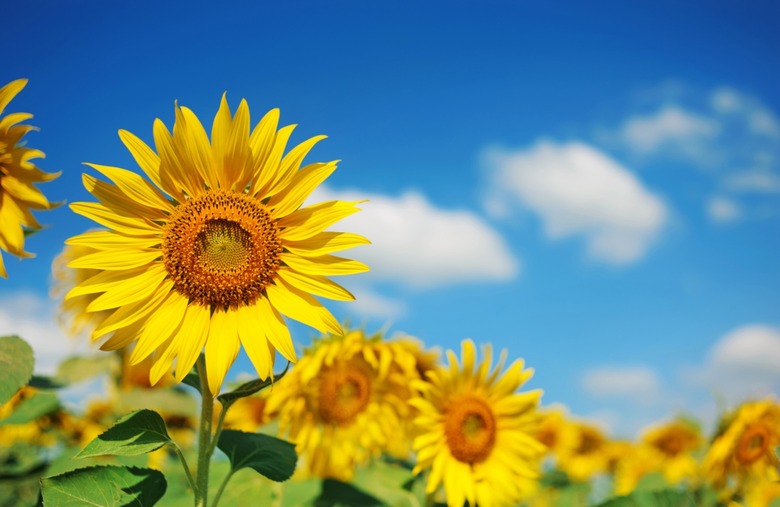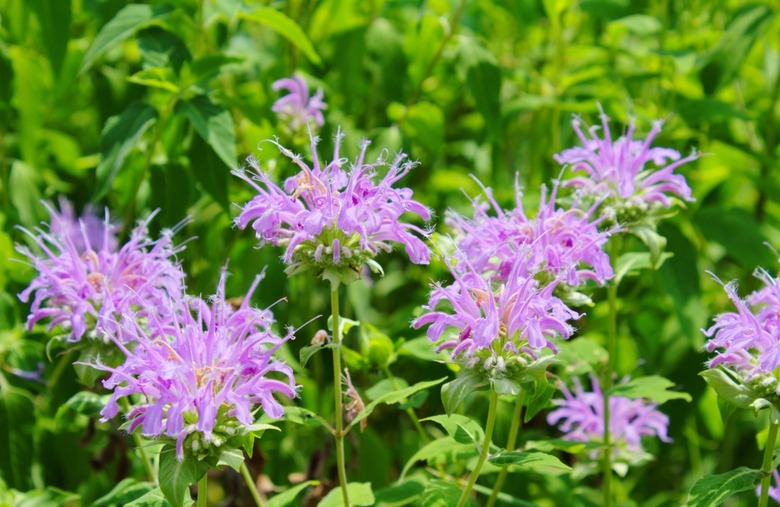Plants And Flowers You Didn't Know You Could Eat
There are countless reasons to love plants. Not only do we need them to breathe (hello, oxygen), but multiple studies show they can also help reduce stress, prevent colds and remove toxins from the air in your home. There's also the obvious — they're pretty nice to look at, and most can make any too-bland environment smell fresh and floral.
Plants also make up most of what we eat — but the fruits and veggies you see in the grocery aisle aren't the only plants humans can use as food. There are countless weeds, wildflowers and even cactuses that can be pretty tasty too. And while caution is advised — you should never eat a plant you can't identify or anything that's been sprayed with chemicals, and some of the plants listed below can induce allergies or reactions with certain medications — each of the plants below could be an adventurous addition to your diet.
Alfalfa
Alfalfa, also known as lucerne and Medicago sativa, is an herb in the legume family and a cousin to clover. In many parts of the world it's most commonly used as mulch and livestock feed. In addition to animal eats, alfalfa sprouts are commonly used as sandwich and salad greens. These common sprouts add freshness and crunch to some dishes, but you probably shouldn't eat them with every meal. The U. S. National Institutes of Health cautions that the sprouts can interact negatively with some medications, and the unsprouted seeds can lead to other serious complications.
Borage blossoms
Borage is native to the Mediterranean, but it can also be found in gardens, especially in the U.K. This colorful herb is also called a starflower because it has five pointed petals that, well, resemble a star. Because it has a cucumber-like taste, the meatier part of the plant is often used in soup, salad and pasta. The flower tastes like honey and is used to accent desserts, lemonade and cocktails. Borage has been used to treat depression, increase urine flow, prevent inflammation, boost breast milk production and strengthen the immune system, but its effectiveness is unclear.
Bull thistle
Bull thistle — sometimes called spear or common thistle — is native to Europe, western Asia and Africa. It is the national flower of Scotland, and is a top nectar producer for bees, hummingbirds and other pollinators. The root is most palatable when mixed with other vegetables. As a relative of the artichoke, the flower bud can also be consumed — just peel the outer layers to find the heart or cook it whole. The stem can be peeled and steamed, boiled or sauteed, but it's best early in the season before the flower is in full bloom. Be warned: The taste is pretty bland. Make sure you remove the thorns before you take a bite and regret it.
Calendula
Calendula — also known as the "poor man's saffron" — is a modern interpretation of the Latin word "calendae," which means "little calendar" or "little clock." This pretty golden plant is part of the daisy family. The flower can be used for tea, tincture or oil. You can also eat the blossoms as they are. The edible petals can be used in salads, with roasted vegetables or atop deviled eggs. Its medicinal properties are known to treat menstrual cramps, sore throat, cancer, ulcers, measles, smallpox and jaundice.
Cattail
Cattail, the common name for around 30 species of wetland plants in the genus Typha, is one of the most common plants in marshes, swamps and ponds in the Northern Hemisphere. It's commonly used to make chair seats, but it can also be eaten. The rhizomes (or roots) are packed with protein and can be pan-fried or ground into flour. Apparently these taste like potato, while the stem tastes more like green onion. People have used "nature's corn dog" to make bread, biscuits, pancakes, casseroles and more.
Chicory
Chicory (also called endive) is a woody, herbaceous plant in the dandelion family. It's typically bright blue, but can sometimes be white or pink. In Europe, the root is used as a coffee substitute, particularly in the Mediterranean region, where the plant is native. It's used as a coffee additive in the U.S. and is most popular in New Orleans. Some brewers use chicory roots to flavor stout beers. The leaves are fairly bitter, but can be eaten raw as part of a salad or cooked with pasta or meat.
Coneflower
Coneflower (Echinacea) is a heat-, drought- and deer-resistant medicinal herb commonly used to fight indigestion, mild bladder infections, the common cold and the flu. It's usually dried and made into tea, tincture or powdered extract. The vibrant purple petals are great garnishes.
Creeping Charlie
Glechoma hederacea — commonly known as ground-ivy, alehoof, catsfoot and creeping Charlie — is part of the mint family, but is considered to be invasive. If you don't want it growing on your lawn, pluck sprigs for salad, soup, stews or omelets. Creeping Charlie has been used to brew ale and also as a substitute for animal rennet in cheese.
Curly dock
Curly dock (or Rumex crispus) is native to Europe and Western Asia, and is distributed in Ireland, the U.S. and Canada. Young plants can be eaten so long as they're boiled in several changes of water. This gets rid of the leaves' oxalic acid, which could cause birth defects and harm to the respiratory tract. If cooked correctly, the semi-tart curly dock is great source of vitamins A and C, iron, potassium and zinc. It should be consumed in moderation only, because it could cause discomfort in the urinary tract and increase the risk of kidney stones.
Dandelion
The dandelion is a nutritious weed with a bright yellow flower. At the end of its life, it withers down to fluffy white seeds you've likely blown into the wind. The whole thing is an excellent source of vitamins A, C and K with a little E and B. It also contains iron, calcium, magnesium and potassium. Raw flowers feature high levels of antioxidants and are considered anti-inflammatory. Dandelions can be used in salad, soups, wine and teas.
Field pennycress
Field pennycress is a plant in the cabbage family. Every summer, it blooms a cluster of white flowers. It can be eaten raw or cooked, but because of its bitter taste, it's usually boiled before being used in salads, sandwiches, lasagna and soup. The seed can be ground and used as an alternative for mustard. If you crush the leaves raw, they emit a putrid garlic-like odor. This earned the field pennycress the nickname "stinkweed."
Fireweed
In some parts of Canada, people call this plant the great willow herb, but in the U.S. it's known as fireweed. Young shoots are typically mixed with other salad greens (as it ages it gets bitter) or used as a substitute for asparagus. The stems are peeled and eaten raw. They're an excellent source of vitamins A and C.
Forget-Me-Not
The cute and teensy-weensy forget-me-not (sometimes called scorpion grass) is the official flower of Alaska and Dalsland, Sweden. The blooms are usually blue, but can be pink or white. The flowers are edible and can be eaten along the trail or used to decorate cakes and dinner plates. Eat these on occasion only, because they do contain a smidge of pyrrolizidine, which could cause liver cancer in larger doses.
Harebell
Harebell can be found around the world, but is most often associated with Scotland. The herbaceous plant is also called bluebell, lady's thimble, witch's bell and "blue rain flowers," because it was thought that picking them would make it rain. Vitamin C-packed harebell leaves are safe to eat and are best used in salad, smoothies or dips.
Hibiscus
Hibiscus is the national symbol of Haiti and the state flower of Hawaii. It's also in the Trader Joe's logo. It's a fairly large, bright pink flower grown in tropical regions. Its popularity in the culinary scene has increased massively over recent years due to its vibrant color, fruity flavor and high level of Vitamin C. Some studies show hibiscus can help treat heart disease, high blood pressure and high cholesterol. Find it in tea and cocktails, use it as a healthier alternative to Kool-Aid, or candy it for dessert.
Lavender
Lavender is a pretty purple perfumed herb native to North Africa and the Mediterranean. Its flower spikes can be used to make essential oil, which is believed to help treat anxiety, fungal infections and hair loss. Lavender essential oil is toxic when consumed, but the actual plant can be used to flavor teas, cocktails, pastas, salad dressings or desserts like scones, ice cream and sorbet. It has something of a sweet, citrusy taste.
Meadowsweet
The meadowsweet is also called the meadow wort and is used to treat colds, upset stomach, ulcers, inflammation and joint disorders. It's native to Europe and Western Asia, but can now found in North America. Meadowsweet has clusters of delicate white flowers with a strong, sweet aroma. These can be added to wine, beer, vinegar and jam.
Nasturtiums
Nasturtium (meaning "nose-twister") is a popular garden plant native to South and Central America. All parts are edible. The unripe seeds can be used in place of capers and the peppery flower is typically used in salad or stir-fry. Nasturtium contains 130 milligrams of vitamin C per 100 grams — and 45 milligrams of lutein, which is the highest amount found in any edible plant. The nutrient is known to protect against eye disorders, cancer, diabetes and heart disease.
Pansies
Pansies are one of the most sought-after edible flowers because they add a vibrant pop to any salad, dinner or dessert plate. You can eat the whole thing too, from the stamen and pistil to the sepals and pedals. When eaten raw, they taste like a mildly spiced lettuce. Be careful about nibbling on blooms from the florist though. Anything sprayed with chemical herbicides should be avoided.
Peppergrass
Peppergrass is often called poor man's pepper because young seedpods can be ground and used as an alternative to pepper. The leaves are a great source of protein, iron and vitamins A and C. They can be used as part of a salad, or if you throw the whole thing in a food processor with turmeric, vinegar, miso, garlic and salt, you'll be left with a mixture that tastes a lot like mustard. Similarly, crushed roots can be mixed with salt and vinegar to make an alternative for horseradish.
Prickly pear
Opuntia, better known as prickly pear, is part of the cactus family. It's native to the Americas, where it's become increasingly popular as a flavoring agent for cocktails and non-alcoholic beverages. If you want, you can eat the leaves, flowers, stem and fruit whole or as part of juice and jam. Prickly pear is high in fiber, antioxidants and carotenoids. Some evidence shows it could help treat diabetes, high cholesterol, obesity and... hangovers.
Queen Anne’s lace
As the story goes, Queen Anne pricked her finger with a needle and a drop of blood dropped on white lace she was sewing. The plant belongs to the carrot family, though it bears little resemblance. It features an elegant cluster of tiny off-white flowers. Young roots can be used in soups and stews, leaves can be tossed in a salad and flowers can be battered and fried. Be especially cautious with this one, as it looks similar to fool's parsley and poison hemlock — both of which are toxic.
Red clover
Red clover is a short-lived herbaceous species in the bean family. The flower is dark pink in color. Though it's widely used as feed for animals and is considered by some to have medicinal properties, it can also be added as a garnish to any dish. Red clover's flowers and leaves are safe to eat, and can be made into jelly or tea.
Roses
Everyone knows what a rose is, but what you may not have known is that it's edible. The vitamin C-packed rose hip (the accessory fruit of the plant) can be used to make jam, soup and tea. Rose water and syrup is often used to flavor drinks and desserts. Just be careful not to prick yourself on the thorny stem.
Sage flowers
Sunflower
The sunflower is a large, bright yellow plant native to woodland areas and prairies in the Americas. If you've ever played ball, you're likely familiar with enjoying sunflower seeds whole, but they can also be ground into powder for bread-making too. Young flower buds can be steamed and eaten in a similar fashion to globe artichokes. The petals, leaves and roots can be made into tea. Long story short: You can eat the entirety of this plant.
Violets
The violet is a colorful plant with heart-shaped leaves. While the name suggests its flowers are a shade of purple, they can also be blue, yellow, white or cream. These have high levels of vitamins A and C. They can be used to flavor jelly, marshmallows, cocktails, cream, scones and soufflés, or cooked in mixed greens and stuffing. Of course, the violet also makes an attractive garnish.
Wild bee balm
Wild bee balm is a deer-resistant flowering plant in the mint family. It's also sometimes called horsemint, Oswego tea and bergamot. The taste is a little bitter, but has been compared to a combination of spearmint, peppermint and oregano. The leaves and flowers are edible raw or cooked. They can be used in salad or to season other foods. When infused in tea, it can relieve nausea, flatulence, menstrual pain and insomnia.
Wood sorrel
The wood sorrel is an edible weed abundant in the U.S. and Canada. Its teensy flowers are usually white or yellow, but are sometimes pink or purple. These are edible, as are the leaves and young green seed pods. Wood sorrel has lots of water content, so it's really refreshing if you're parched, and it has a mildly sour lemony flavor. This plant is rich in vitamin C and can be used in soup, salad, sauce or tea.
Zucchini blossoms
Zucchini (or squash) blossoms produce all of the different types of squash you see in the produce section of the supermarket. You'll rarely find the blossoms there though, as they're extremely perishable. If you're able to grow or get your hands on some, they can be eaten raw, on pizza, battered and fried, stuffed or used to make a delicious soup hearty enough for dinner.
More from The Daily Meal:
Meet the Clean 15: The Fruits and Vegetables Least Likely to Poison You
15 Vegetarian Cookout Recipes That Will Make You Forget Burgers and Dogs
15 Familiar Plants and Animals That May Not Be Around Much Longer
